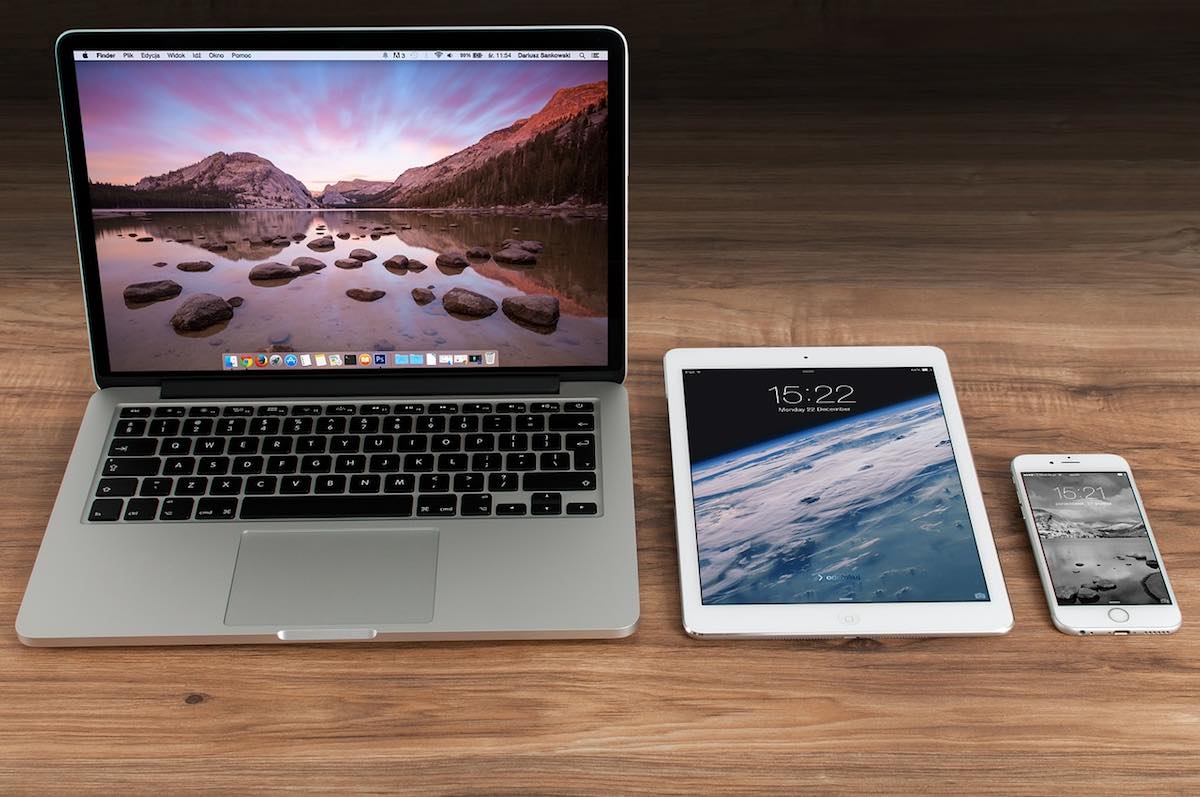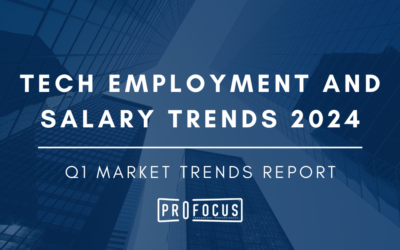There’s an old proverb that states “necessity is the mother of invention”. It basically means that people can often come up with inventive ideas born out of some sort of difficulty or pain point.
The CEO of Netflix was famously quoted as saying his company was born because he was sick and tired of paying late rental fees because he didn’t return them back to the store on time. This was back in the days of physical media like VHS videotapes and DVDs.
So he came up with the idea of allowing a customer to keep a movie as long as possible, without being penalized, and when they were done, they could put their movie(s) back into a return envelope and drop it off in their mailbox.
The idea was simply brilliant. He found a pain point that irritated him, and came up with a great new disruptive business idea that helped propel his company to a total net worth of almost two billion dollars.
Steve Jobs, the late cofounder of Apple, came up with groundbreaking product after product, all stemming from pain points he experienced in other products.
He wanted a better personal computer than the command line personal computers coming out of IBM, so he invented the revolutionary GUI based operating system computer, the Macintosh. Jobs wanted a better mp3 music player than what was already out there, and thus the iPod was born. He didn’t like the choice of smartphones that were out in the market, so he invented the iPhone.
I had my own little personal pain point experience which I came out of, victorious. Compared to the great achievements of Steve Jobs, it was beyond minuscule.
But hey, it mattered to me!
About every two weeks, my mom would call me up and urgently proclaim that her car dashboard phone system was “broken”.
Of course, when you work in technology for a living, you are the eternal tech support person for your entire family.
As her dutiful #1 son (sorry, dear younger brother!), I would drive over to my mom’s house and take her phone and step inside her car and figure out what was going on.
She recently purchased a new Toyota hybrid gas car with one of those fancy new computerized car dashboard input screens that you could use to play music, get turn by turn GPS directions, and MOST important to her, use to make phone calls to her most frequent phone contacts.
And every couple of weeks, like clockwork, for whatever reason, the car dashboard screen would lose the bluetooth connection to her phone, and you would have to go through the rigamarole of reestablishing the connection from the car dashboard to the phone.
It didn’t take long to figure out what the root cause of her problem was. And I was quickly getting tired of hoofing it over to my mom’s house to manually fix the problem.
She was using a “free” phone supplied to her by her phone carrier, Verizon, and it was basically the lowest quality, no name brand phone Verizon could find.
My mom, bless her heart, HATES paying for premium products … she just doesn’t think paying for premium anything is worth it.
I, for one, am the exact opposite, I will happily fork over my hard earned dollars for a more expensive product or service, as long as it proves its worth … which in my case, means I never have to worry about it breaking down or causing support headaches like the very one I was suffering with my mom’s “free” phone.
Firstly, I had to explain to my mom there is no such thing as a “free” phone.
I had to explain to her the concept of the subsidized model which our American telecom carriers, up until recently, used to operate under.
For the longest time, phone carriers would advertise their phone plans and proudly proclaim in bold 36 point font that you would get a FREE PHONE! if you signed up with them and sign a mandatory 2 year contract.
My mom, and I’m sure many other Americans as well, liked the idea of “free”.
But my mom didn’t realize that the “free” phone Verizon gave her wasn’t actually free at all. The cost of her phone was subsidized … meaning that her monthly phone bill included not only the cost of her monthly phone plan, but a little chunk of the cost of her “free” phone as well.
Why would carriers do this?
Well, for one, there’s no way a phone carrier is going to give you free ANYTHING. You’re going to be paying on the nose, sooner or later, whether you realize it or not.
They’re certainly not, out of the goodness of their “heart”, going to give you a phone for the true definition of FREE.
So carriers like Verizon and others, would “bake” the cost of your “free” phone over the course of a typically two year contract.
So divide the true total cost of that “free” phone by 24, and that amount would be added to the amount of your phone plan.
But here’s the truly EVIL and devious marketing scheme practiced by all the major US carriers, even after your two year contract was over, you were STILL being charged for that additional amortized amount of your subsidized phone!
Many consumers would automatically assume their monthly phone bill would go down, because the extra amount tacked on to the bill to pay off the phone, would disappear off the monthly bill.
WRONG WRONG WRONG.
A truly hideous and unfair billing practice that should have been outlawed by our government.
Verizon and other phone carriers took advantage of the marketing power of “free”.
What SHOULD happen is your monthly phone bill should go down, as soon as your phone was completely paid off over the course of the two year contract.
That wasn’t the only abuse.
Verizon also locked their phones as well.
Meaning that you couldn’t take that same phone and go to another network carrier like AT&T, Sprint or T-Mobile, and use their own network.
Why on earth would they do something like that?
Because they wanted to do everything in their power to keep you as their customer.
My mom was caught in Verizon’s snare, hook, line and sinker.
Not only was she paying for a poor quality, sub-standard “free” phone that she was eternally paying extra for in her monthly bills, she couldn’t simply go to another carrier network that might save her more money in the long run.
I am absolutely sure her bluetooth connectivity problems with her new car, stemmed from the fact she was using a sub-standard, cheapo phone which came bundled with her phone plan.
She was locked into Verizon’s hardware and software ecosystem like a fly in a black widow spider’s web.
It made me realize just how powerful a tech stack ecosystem can lock a person into its web.
The whole purpose of a tech stack, whether it’s from a phone carrier like Verizon, or a software company like Microsoft, Apple or Google, is to keep that person on that platform for as long as possible, whether it’s out of financial gain or some other strategic goal from that organization.
Google knows the power of “free” very well. Notice how you never ever have to pay for Google’s primary products like Gmail, Google Maps, Google Calendar or their search engine?
Well, there is a cost, you just don’t realize it.
For the privilege of using their systems for “free”, you are giving Google the right to collect all your web surfing habits, the data you submit, and anything else that can electronically tracked.
Think about how valuable all this data is to other companies. If a company knew I liked to use Google’s search engine to look up the prices for a new car, how valuable would that kind of shopping research be to a company like, say, Toyota, GM or Ford?
Pretty darned valuable, to say the least.
And that’s EXACTLY how Google makes money.
YOU are their product. Your life habits, your shopping habits, pretty much everything that can be electronically collected about you.
It’s why the tech stack ecosystem is so powerful … it has the power to lock a person into using their products and services, whether they realize it or not.
It’s why Microsoft, Apple, Google, Facebook and many other technology giants spend so much money, time and effort locking consumers and technology workers into using their products and services.
Once you get used to using their products and services, it becomes very difficult to choose something else, because you’ve already spent a significant amount of time and effort getting used to their ecosystem. They are banking on the face that you get so accustomed to their system of things that switching to something else becomes a major hassle.
In software development, a software developer has three major tech stacks to choose from. Windows, Mac or Linux/Unix.
Once they choose one of those platforms, more often than not, they usually stick to that same platform for the rest of their professional career.
Firstly, because it takes a lot of time and investment to get familiarized with that specific tech stack/ecosystem.
To switch to a completely different ecosystem will take a lot of additional time and effort. Once a developer acquires proficiency with a particular ecosystem, it’s very easy to build an entire career just on a single ecosystem, so why bother learning something else?
Of course, there’s nothing stopping someone from learning multiple platforms and ecosystems, and in fact, can boost one’s marketability in the job market by being a “polyglot developer”.
So how did I go about fixing my mom’s phone connectivity problem?
Well, I knew how difficult and tedious it would be, but I saw no other choice.
I forced my mom out of Verizon’s hardware and software ecosystem.
I knew it would be hard, but I didn’t realize just how difficult and tedious it would be.
I pretty much spent a whole weekend, breaking my mom free from Verizon’s sticky ecosystem.
The first thing I had to do was switch out my mom’s on contract carrier phone.
I knew I was going to purchase a new iPhone from Apple around the same time she was experiencing all her phone troubles with her car, so instead of selling my current iPhone, I would just give her my old one.
It’s completely unlocked, meaning that you can switch to a completely different phone carrier and will switch over seamlessly to the new phone network.
This is actually how most smartphone customers outside of the United States use their smartphones. They purchase unlocked phones that they can switch, at will, without being penalized financially.
When I opened up her Verizon phone, to take out her SIM card (Subscriber Identity Module), I realized it wouldn’t fit into my Nano Sim card tray from my own iPhone.
Yet another obstacle, and I had to drive my mom to the nearest Verizon phone store to get a smaller nano sim card which would fit into my iPhone.
When I slotted her new nano sim card into the iPhone, it only took several seconds to re-establish itself to the Verizon phone network.
That was problem #1 solved.
The second problem was none of her old phone number contacts came over from her old phone, and her phone contacts list was quite large.
I realized that she never backed up her phone contacts to the cloud … which in retrospect, shouldn’t have surprised me … she really is part of that last pre-technology generation who never got proficient at using computers and smartphones.
I tried a last ditch effort to establish a bluetooth phone to phone data transfer operation between her old Verizon phone and my iPhone … it was able to transfer all her photos from the old phone to the new phone, but alas, the phone contacts wouldn’t transfer over.
Murphy’s Law strikes again.
So what did I end up doing for the better part of a Sunday?
Yeah, you guessed it, MANUALLY INPUTTING ALL HER OLD PHONE CONTACTS into the iPhone.
I felt like I was back in Fred Flintstone’s old town of Bedrock, performing the Jurassic job of putting all her existing phone contacts into the iPhone.
Not exactly the most enjoyable experience in the world, but finally finished late in the evening.
And I made damn sure that the iPhone would back up all her applications and data to the cloud every day, so that I could restore from a cloud backup if she ever switched out to a new iPhone, which I would plan on doing from now on, when I purchased a new iPhone for myself and give her my current one.
She has a family plan which includes herself, my dad and one of her friends, and they all get a meager 1 gigabyte of data each under Verizon’s truly hideous family plan.
My goal is to eventually have everyone under her family plan using unlocked iPhones that won’t be locked into Verizon’s carrier network.
Once that happens, I’m going to drive my mom down to the nearest Verizon store, tell them to completely terminate her family plan contract, and then proceed to dance a little Irish jig on the way out, and get my mom to switch to a completely different phone carrier that will save her more money and give her a much more generous data plan or an unlimited package.
And I know that I will have to go through the same hassle and pain of getting my dad and my mom’s friend phones set up and running.
But I know I will eventually reach that glorious moment where they will all be completely free of Verizon’s painful ecosystem and have the freedom to switch to any other phone carrier in the world, without being locked into a different ecosystem of hardware and software.
My mom is really liking the iPhone. It’s a much bigger screen, the software is user friendly, and she can even, wonder of all wonders, knows how to actually use text messaging now!
She just messaged me to don’t forget to brush my teeth.
Le sigh…




